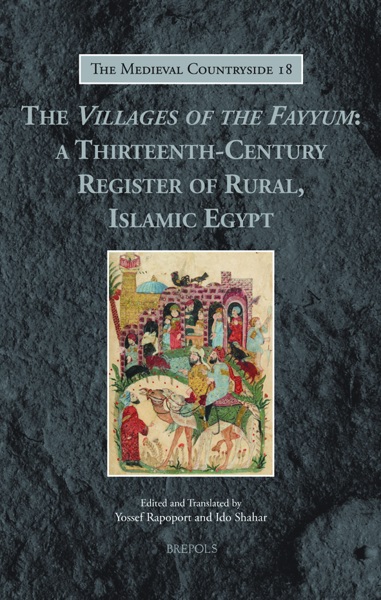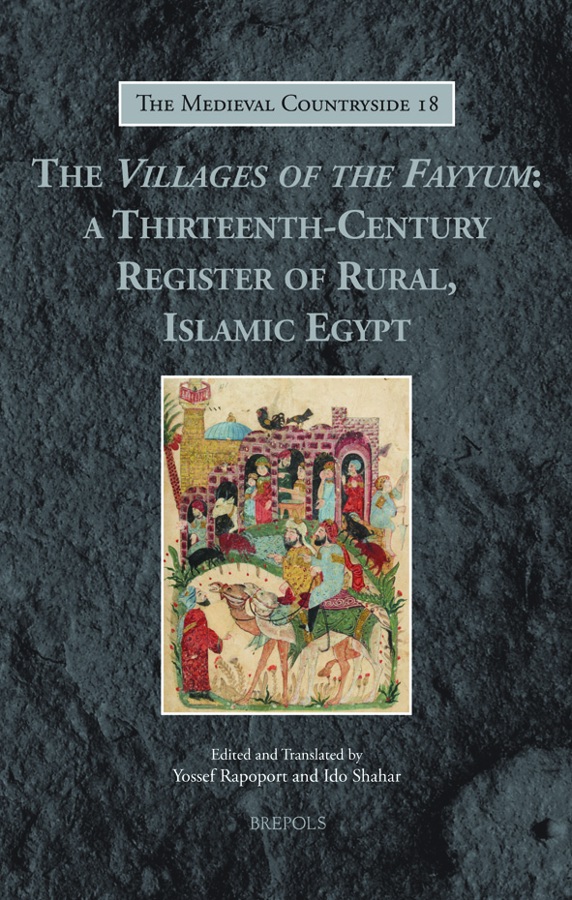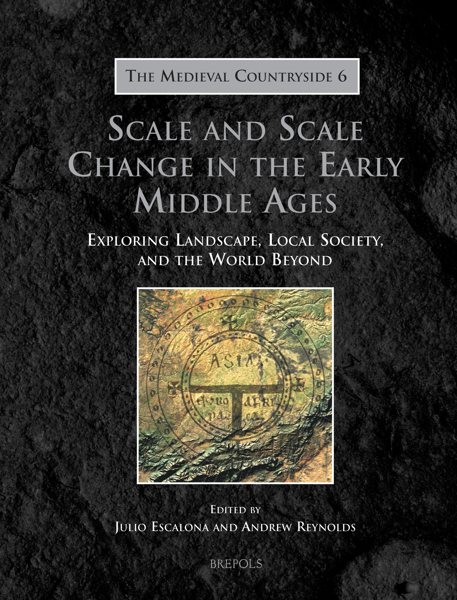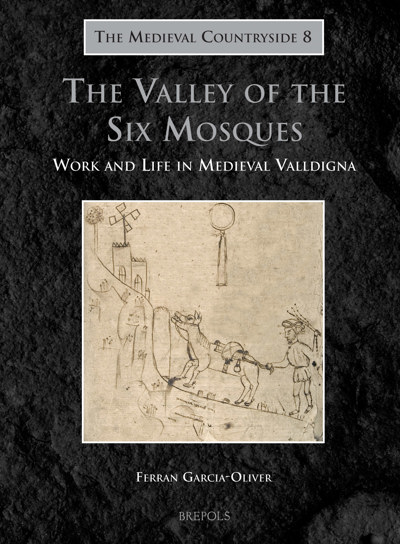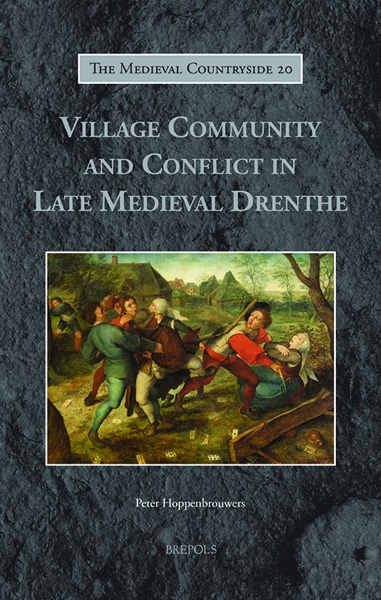
The Villages of the Fayyum: A Thirteenth-Century Register of Rural, Islamic Egypt
Yossef Rapoport, Ido Shahar (eds)
- Pages: viii + 260 p.
- Size:216 x 280 mm
- Illustrations:1 map
- Language(s):English, Arabic
- Publication Year:2018
- € 120,00 EXCL. VAT RETAIL PRICE
- ISBN: 978-2-503-54277-5
- Paperback
- Available
- € 120,00 EXCL. VAT RETAIL PRICE
- ISBN: 978-2-503-55996-4
- E-book
- Available
Richly annotated and with a detailed introduction, this volume offers the first academic edition and translation of a first-hand account of the Egyptian countryside, offering a key insight into the rural economy of medieval Islam.
“Overall, this is an exceptionally illuminating study/primary source which represents a major advance in our knowledge on the rural human topography both of the Near East in general and Egypt in particular. It is scrupulously researched and plausible in its conclusions. Moreover, the nature of the thirteenth-century register lends itself to the creation of important statistical data relevant to a range of important debates.” (Nicholas Morton, in Al-Masāq, 31:1, 2019, p. 112-114)
“Taken together, these two volumes are a wonderful result of a project that started with an AHRC grant back in 2009. Most importantly, they succeed in moving the gaze of scholarship beyond the walls of the major cities where most studies of this period remain. The study is a major piece of scholarship and a must-read for anybody interested in Mamluk history, Egyptian history, rural history or economic history. It is eloquently written and exemplary in the clarity of both argument and methodology – a privilege to read and to review.” (Konrad Hirschler, in the Bulletin of the School of Oriental and African Studies, 82/1, 2019)
The work is a true goldmine for economic and agrarian historians of rural Egypt (…) As is evident from this discussion, Rapoport has produced an insightful book that convincingly contributes to a number of current debates. Its analyses make al-Nābulusī’s sometimes dry and impervious but unique and important data meaningful for modern historians. In short, anyone interested in al-Nābulusī’s Villages of the Fayyum will find a highly accessible version, meeting modern scholarly standards, in Rapoport and Shahar’s edition and translation. Anyone interested in what it was al-Nābulusī has recorded in this text, explicitly and implicitly, now has to read Rapoport’s Rural Economy and Tribal Society in Islamic Egypt.” (Jelle Bruning, in BIBLIOTHECA ORIENTALIS, LXXVI N° 3-4, 2019, p. 546-552)
« Ces quelques exemples attestent de la richesse de ce texte dont une exploitation nouvelle est désormais possible grâce à cette édition et à cette traduction particulièrement utiles et bienvenues.» (Jean-Michel Mouton, dans Bulletin Critique des Annales Islamologiques, 34, 2020, p. 58)
"This is a very important contribution, not only to the historiography of Middle Islamic societies, but to peasant studies in the Islamic world." (Bethany J. Walker, in Sehepunkte, 21.2.2021)
“No scholar working on either the Ayyubid era in Egypt or the issues raised in this analysis can afford not to read this valuable contribution.” (Daniel M. Varisco, in Journal of the American Oriental Society, 142/1, 2022, p. 194)
Medieval Islamic society was overwhelmingly a society of peasants, and the achievements of Islamic civilization depended, first and foremost, on agricultural production. Yet the history of the medieval Islamic countryside has been neglected or marginalized. Basic questions such as the social and religious identities of village communities, or the relationship of the peasant to the state, are either ignored or discussed from a normative point of view.
This volume addresses this lacuna in our understanding of medieval Islam by presenting a first-hand account of the Egyptian countryside. Dating from the middle of the thirteenth century, Abū ‘Uthmān al-Nābulusī’s Villages of the Fayyum is as close as we get to the tax registers of any rural province. Not unlike the Domesday Book of medieval England, al-Nābulusī’s work provides a wealth of detail for each village which far surpasses any other source for the rural economy of medieval Islam. It is a unique, comprehensive snap-shot of one rural society at one, significant, point in its history, and an insight into the way of life of the majority of the population in the medieval Islamic world. Richly annotated and with a detailed introduction, this volume offers the first academic edition of this work and the first translation into a European language. By opening up this key source to scholars, it will be an indispensable resource for historians of Egypt, of administration and rural life in the premodern world generally, and of the Middle East in particular.
Part I
- Introduction
- Chapter One: Author and Work
- Chapter Two: Decoding the Villages of the Fayyum
- On the Arabic Edition
- Measures, Weights and Monetary Units
- Map of the Villages of the Fayyum
- Author’s Introduction
- First Chapter: A general description of the Fayyum
- Second Chapter: Account of the Fayyum's climate
- The Third Chapter: A description of the Fayyum's air and water
- The Fourth Chapter: Explaining the continuous flow of its water even when it is not inundated [by the Nile], and without having any river drawn into it or a canal reaching it
- The Fifth Chapter: Account of its inhabitants and their division into Bedouins and non-tribal people (ḥaḍar)
- The Sixth Chapter: Account of the deterioration of its canal and the reason for that, and of the villages that have so fallen into ruin that their reconstruction could only be achieved by [investing] generous sums of money over a long period of time
- The Seventh Chapter: List of the names of its villages, arranged by the letters of the alphabet
- The Eighth Chapter: Account of its congregational mosques, neighbourhood mosques, monasteries and churches
- The Ninth Chapter: Account of of its aggregate taxes in specie and in grains, and other taxes
- The Tenth Chapter: A description of its villages and their fiscal revenues, village by village
Index
